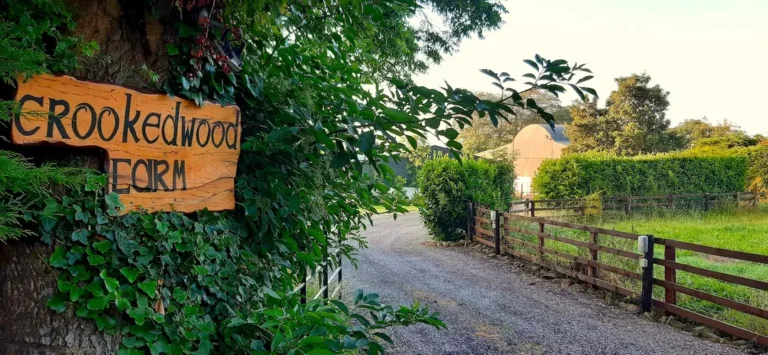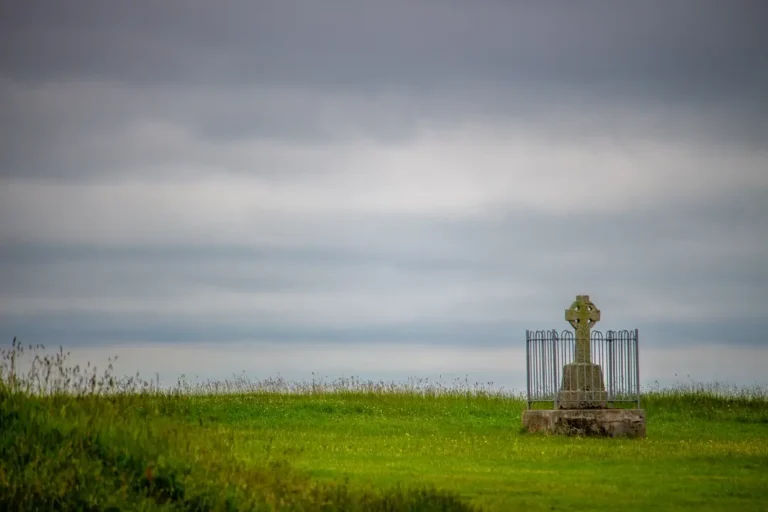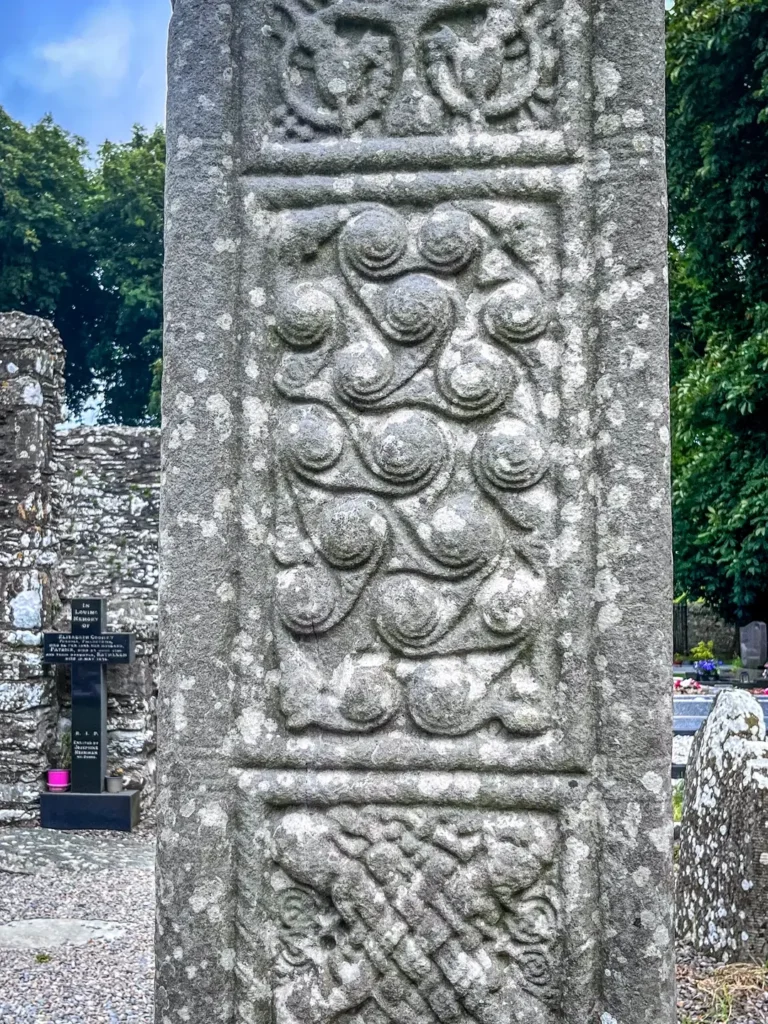Pilgrimage Routes in the Boyne Valley
The Boyne Valley in Ireland is super old and has lots of cool history. It’s a great place for walks, especially if you like seeing old buildings and pretty nature. The Boyne Valley Camino is a special path that lets you explore this area, mixing outdoor fun with a peek into the past. It’s part of a bigger network of walking routes that connect Ireland to Spain, making it a unique journey for anyone interested in pilgrimage or just a good long walk. These boyne valley pilgrim paths offer a chance to experience the region’s heritage firsthand.
Key Takeaways
- The Boyne Valley Camino is a 25km loop walk that starts and ends in Drogheda, letting you explore at your own pace.
- The path includes famous spots like Old Mellifont Abbey and the Battle of the Boyne site, giving you a real sense of history.
- You’ll walk through all sorts of scenery, from quiet riverside paths to country roads and even some town areas.
- There are cool places to see along the way, like St. Peter’s Church and Tullyallen Village, plus spots to collect special stamps for your pilgrim passport.
- The Boyne Valley Camino connects to the larger Celtic Camino, meaning you can keep walking all the way to Santiago de Compostela in Spain.
The Boyne Valley Camino
The Boyne Valley Camino is a looped walking trail, about 25 kilometers long, that starts and ends in Drogheda. It’s designed as a modern pilgrimage, blending history, nature, and a bit of spiritual reflection. It’s a great way to experience the Boyne Valley at your own pace. The route takes you through a variety of landscapes, from riverside paths to quiet country roads. It’s not super strenuous, but it’s long enough to feel like you’ve accomplished something. You’ll pass by some pretty significant historical sites too, which adds another layer to the experience. It’s a nice way to spend a day or two, especially if you’re into walking and exploring.
A Self-Guided Looped Walk
The Boyne Valley Camino is designed to be done on your own. It’s a looped walk, meaning you start and finish in the same place: Drogheda. This makes planning a lot easier, as you don’t have to worry about transportation back to your starting point. The route is generally well-marked, but it’s always a good idea to have a map or GPS with you, just in case. You can find online Boyne Camino map resources to help you plan your route. The self-guided nature of the walk allows you to set your own pace and spend as much or as little time as you like at each point of interest.
Connecting to the Celtic Camino
The Boyne Valley Camino is actually part of a larger network of pilgrim routes known as the Celtic Camino. This means that if you complete the Boyne Valley Camino, you can then continue your pilgrimage in Spain. To get official recognition, you need to walk a certain distance in Spain (I think it’s around 75km) to get your Compostela (pilgrim certificate). It’s a cool way to connect Irish heritage with the famous Camino de Santiago. It gives the Boyne Valley walk a bit more significance, knowing it can be part of a much bigger journey. It’s a great way to experience Celtic Camino series.
Official Camino Passports
If you’re serious about the pilgrimage aspect, you can get an official Camino Passport. These passports are used to collect stamps along the route. Local businesses and attractions along the Boyne Valley Camino have unique stamps that you can collect as you go. It’s a fun way to document your journey and support the local community. Once you’ve completed the Boyne Valley Camino, you can use your stamped passport as proof of completion if you decide to continue your pilgrimage in Spain. It’s a nice souvenir too, a reminder of your walk through the Boyne Valley. The Boyne Valley Walking team would like to thank the community for their huge support of this project. The kindness of the community, local businesses, local artists, local authorities, local schools, charities and walking groups, local media has helped make the idea of the Boyne Valley Camino become a reality.
Walking the Boyne Valley Camino offers a unique blend of physical activity, historical exploration, and personal reflection. It’s a chance to disconnect from the everyday and connect with the rich heritage of the Boyne Valley.
Key Historical Sites Along the Route
The Boyne Valley isn’t just pretty; it’s packed with history. The Boyne Valley Camino passes by some seriously important spots. You’ll be walking in the footsteps of monks, soldiers, and maybe even a few ancient kings. It’s a cool way to connect with Ireland’s past.
Old Mellifont Abbey
Old Mellifont Abbey was the first Cistercian monastery in Ireland, founded way back in 1142. It’s a seriously impressive place, even in its ruined state. You can wander around the remains and imagine what life was like for the monks who lived and prayed there centuries ago. The architecture is amazing, and it’s a peaceful spot to take a break and soak in the history. It’s a must-see on the Boyne Valley Camino. You can explore the Boyne Valley Drive Sites nearby.
Battle of the Boyne Site
The Battle of the Boyne, fought in 1690, was a major turning point in Irish history. The Boyne Valley Camino takes you right through the site of the battle. You can walk along the riverbanks and imagine the clash of armies. Oldbridge House, located on the site, has exhibits and information about the battle. It’s a sobering but important place to visit. You can see the historic trails that the armies took.
Historic Drogheda
Drogheda is a medieval town with a rich history. It’s the starting and ending point for the Boyne Valley Camino, so you’ll have plenty of time to explore. Check out St. Peter’s Church, which houses a relic of St. Oliver Plunkett. Walk along the old town walls and imagine what it was like to live in Drogheda centuries ago. The town has a vibrant atmosphere, with plenty of shops, restaurants, and pubs. It’s a great place to experience modern Irish culture while also connecting with the past. You can explore the towns nearby.
Walking through these historical sites really brings the past to life. It’s not just about reading about history in a book; it’s about experiencing it firsthand. You can feel the weight of history beneath your feet and imagine the events that unfolded in these places. It’s a powerful and moving experience.
Diverse Landscapes of the Boyne Valley
The Boyne Valley Camino isn’t just a historical journey; it’s a feast for the eyes, offering a diverse range of landscapes that will keep you engaged every step of the way. From tranquil riverside paths to bustling townscapes, there’s always something new to discover. The variety is one of the things that makes this Boyne Valley walk so special.
Riverside Greenways and Woodland Paths
Imagine strolling along the banks of the River Boyne, the water gently flowing beside you. These riverside greenways offer a peaceful escape, perfect for quiet reflection. The woodland paths are equally enchanting, winding through forests filled with the sounds of nature. These paths provide a welcome respite from the hustle and bustle of everyday life.
Quiet Country Roads and Canal Paths
For a change of pace, the route also includes quiet country roads. These roads offer stunning views of the surrounding countryside, with rolling hills and green fields stretching as far as the eye can see. The canal paths provide another unique perspective, following the historic waterways that once played a vital role in the region’s economy.
Urban and Rural Settings
The Boyne Valley Camino seamlessly blends urban and rural settings. You’ll start and end your journey in the vibrant town of Drogheda, with its historic streets and bustling atmosphere. But in between, you’ll be immersed in the tranquility of the countryside, passing through small villages and farmlands. This contrast offers a rich and varied experience, showcasing the many facets of the Boyne Valley.
The blend of landscapes is a real highlight. One moment you’re surrounded by nature, the next you’re exploring a charming village. It keeps the walk interesting and makes you appreciate the beauty of the region.
Points of Interest and Amenities
The Boyne Valley Camino isn’t just about the walk; it’s about the places you encounter along the way. From historical landmarks to charming villages, there’s plenty to see and experience. Plus, you’ll find amenities to make your pilgrimage comfortable and enjoyable.
St. Peter’s Church, Drogheda
St. Peter’s Church in Drogheda is a must-see. It’s known for holding the preserved head of St. Oliver Plunkett. The church itself is a beautiful example of Gothic Revival architecture. It’s also a good place to take a break and reflect during your journey. While you’re there, consider exploring other Drogheda attractions.
Tullyallen Village
Tullyallen is a quaint village along the route, offering a glimpse into rural Irish life. You’ll find local shops and pubs where you can grab a bite to eat or a refreshing drink. It’s a great spot to chat with locals and learn more about the area’s history and culture.
Oldbridge House
Oldbridge House is located at the Battle of the Boyne site. It offers exhibits and information about this important historical event. The house itself is a beautiful example of Georgian architecture, and the surrounding gardens are perfect for a relaxing stroll. It’s a worthwhile stop for anyone interested in Irish history.
Remember to check opening hours for attractions and plan your stops accordingly. Some places may have limited hours, especially during the off-season. Also, be aware that some amenities may be closed on certain days of the week.
Here’s a quick guide to some potential amenities you might find:
- Rest Stops: Benches and picnic areas are located along certain sections of the route.
- Food & Drink: Pubs, cafes, and restaurants are available in the towns and villages along the way.
- Accommodation: Options range from B&Bs to hotels in the larger towns.
Navigating the Boyne Valley Pilgrim Paths
Accessing Route Maps and Guides
Planning your walk is key! You can find several resources to help you along the Boyne Valley Camino. Online maps are available, offering a digital overview of the route. Also, keep an eye out for physical maps and guides at local tourist information centers and some businesses along the way. These resources usually highlight key landmarks, rest spots, and potential hazards. Don’t forget to check out Boyne Valley Trails for more information.
Collecting Local Artist Stamps
One of the coolest parts of the Boyne Valley Camino is the chance to collect unique stamps designed by local artists. To do this, you’ll need an official Camino Passport. These passports can be obtained at the starting point in Drogheda and at various locations along the route. As you visit different points of interest, get your passport stamped. It’s a fun way to mark your progress and support local art!
Safety and Preparation for Walkers
Your safety is paramount when undertaking the Boyne Valley Camino. Here are a few things to keep in mind:
- Let someone know your plans: Tell a friend or family member your route and expected return time.
- Check the weather: Irish weather can be unpredictable, so be prepared for anything.
- Wear appropriate clothing: Sturdy footwear is a must, and layers are always a good idea.
- Bring supplies: Pack water, snacks, sunscreen, and a basic first-aid kit.
- Be aware of traffic: Some sections of the trail are shared with vehicles and cyclists.
Remember to respect the environment and follow the Leave No Trace principles. Dispose of any waste responsibly and stay on marked paths. If you encounter an emergency, dial 999 or 112.
Consider consulting the Blackstairs map for detailed trail information.
The Significance of the Boyne Valley Camino
The Boyne Valley Camino is more than just a walk; it’s a journey through time, culture, and community. It connects people to the rich heritage of the Boyne Valley and links Ireland to the wider network of Camino routes in Europe. It’s a great way to spend a day, and you’ll feel good about it afterwards.
Highlighting Regional Heritage
The Boyne Valley Camino shines a light on the historical and natural treasures of the region. The route passes by significant sites, offering walkers a chance to connect with Ireland’s past. You’ll see things like Old Mellifont Abbey and the Battle of the Boyne site, each telling a story of Ireland’s rich history. It’s a great way to experience Boyne Valley tours and learn something new.
Connecting Irish and Spanish Pilgrim Routes
One of the coolest things about the Boyne Valley Camino is how it connects to the famous Camino de Santiago in Spain. Walkers can complete the 25km loop in Ireland and then continue their pilgrimage by walking from A Coruña to Santiago de Compostela. This connection allows people to experience a Celtic Camino and receive an official Compostela in Santiago after completing the required 100km. It’s like a bridge between Irish and Spanish cultures.
Community Involvement in Route Development
The Boyne Valley Camino wouldn’t be possible without the support and involvement of the local community. From local artists designing the stamps for the Camino Passports to local businesses supporting the route, it’s a real community effort. The Boyne Valley Walking team has worked hard to develop the route, and their dedication shows. It’s a testament to what can be achieved when people come together to celebrate their heritage.
The Boyne Valley Camino is super important. It’s a special journey that helps you connect with history and nature. Want to learn more about this amazing path? Head over to our website for all the details!
Conclusion
So, that’s a quick look at the pilgrimage routes in the Boyne Valley. It’s pretty clear these paths offer a lot more than just a walk. You get to see some amazing history and beautiful nature all at once. Whether you’re into old buildings, peaceful scenery, or just want to get out and move, there’s something here for you. It’s a good way to connect with the past and enjoy the present. Definitely worth checking out if you’re in the area.
Frequently Asked Questions
What exactly is the Boyne Valley Camino?
The Boyne Valley Camino is a special walking path, about 15.5 miles long, that loops around the historic town of Drogheda. It’s designed for you to explore on your own, taking you through beautiful nature and important historical spots.
How does this walk connect to the famous Camino in Spain?
This walk is part of the bigger ‘Celtic Camino’ idea. If you walk the 15.5 miles here and then another 46.5 miles from A Coruña to Santiago de Compostela in Spain, you’ll have completed enough miles (62 miles total) to get an official ‘Compostela’ certificate.
What cool historical places will I see on the route?
You’ll see some amazing places like Old Mellifont Abbey, which was Ireland’s very first Cistercian monastery, and the famous Battle of the Boyne site. The path also takes you through charming Tullyallen village and along the Boyne River.
What kind of scenery can I expect on the walk?
The path offers a mix of scenery: peaceful riverside greenways, shady woodland trails, quiet country roads, and even parts of Drogheda town itself. You’ll get to experience both city and nature.
Can I collect stamps like on other Camino routes?
Yes! You can get a special ‘Camino Passport’ and collect unique stamps along the way. These stamps are designed by local artists and make for a fun souvenir of your journey.
What should I do to stay safe and prepared for the walk?
It’s always smart to tell someone where you’re going, bring a charged phone, and walk with a friend if you can. Wear good walking shoes, dress for the weather (layers are best!), and bring snacks and water. Some parts of the trail share space with cars and bikes, so be careful and follow road rules.





